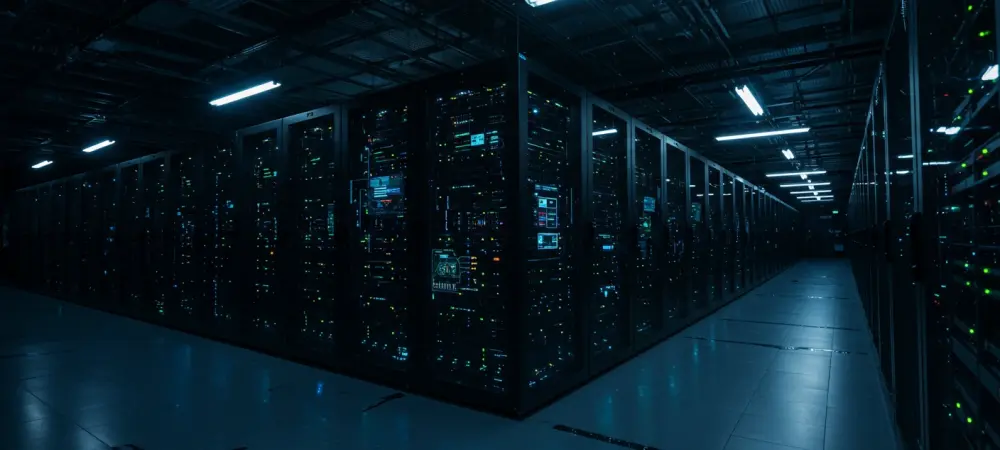In the heart of Texas, just northeast of Austin, the small city of Taylor has become a focal point in the expanding world of digital infrastructure with the recent approval of a major data center campus by Blueprint Projects. This development marks a significant step in the region’s technological evolution, promising substantial economic benefits while sparking debates over community impacts. Data centers, essential for supporting cloud computing and artificial intelligence, are increasingly shaping local economies, but they also bring challenges related to resource usage and environmental concerns. This timeline traces the key events surrounding Blueprint’s project in Taylor, highlighting the delicate balance between economic growth and the needs of local residents. Understanding this dynamic is crucial as Texas emerges as a hub for such facilities, navigating the dual pressures of progress and preservation.
Timeline of Key Events
July 2024 – Taylor City Council Approves Blueprint’s Data Center
On July 24, 2024, the Taylor City Council gave unanimous approval to Blueprint Projects’ proposal for a data center campus on a 52-acre site at 1601 Martin Luther King Jr. Drive. Spanning 135,000 square feet across three construction phases, this ambitious project is backed by a projected $1 billion investment over the next decade. Led by CEO Yaerid Jacob, Blueprint anticipates creating 20 to 30 jobs and achieving a power capacity of 60MW, with an initial 30MW agreement secured with Oncor. Despite the economic promise, the approval faced resistance from local residents concerned about transparency. During the council meeting, a peaceful demonstration saw neighbors wearing red X’s to express dissent. In response, city officials mandated an environmental impact assessment, requiring Blueprint to fund an on-site substation, implement a closed-loop water system, and install noise barriers with landscaping buffers to mitigate community concerns.
August 2024 – Financial Incentives Granted to Blueprint
Following the approval, in August 2024, Taylor extended significant financial incentives to Blueprint Projects to bolster the data center initiative. These incentives include a ten-year 50 percent rebate on taxes, contingent on a minimum investment of $225 million and the creation of at least five jobs, alongside a 50 percent rebate on local use tax for construction materials. CEO Yaerid Jacob expressed optimism, projecting an investment of $360 million by early 2027, surpassing the required threshold. While these tax breaks underscore Taylor’s commitment to attracting tech investment, they also intensified resident concerns about whether the economic benefits would genuinely support the community or primarily favor corporate interests.
September 2024 – Blueprint Expands to Georgetown
In September 2024, Blueprint Projects expanded its regional presence by securing approval for a smaller data center in Georgetown, Texas, on a ten-acre site at 1201 Westinghouse Road. This $160 million project, covering 45,000 square feet with a 35MW capacity, also received tax incentives similar to those granted in Taylor. The expansion reflects Blueprint’s aggressive growth strategy and reinforces Texas’s status as a burgeoning hub for data centers. However, it also raised broader questions across the region about resource allocation and environmental strain, as multiple communities confront the implications of hosting such high-demand facilities.
April 2025 – Investment Boost from Northampton Capital Partners
By April 2025, Blueprint secured an undisclosed investment from Northampton Capital Partners to support its data center projects in both Taylor and Georgetown. This financial backing signaled strong market confidence in Blueprint’s vision, providing essential capital to accelerate construction and equipment procurement. For Taylor, this milestone further solidified the project’s momentum, though it did little to alleviate ongoing local apprehensions about the long-term impacts on infrastructure, resource usage, and overall quality of life in the community.
Broader Context and Implications
The chronological progression of Blueprint’s data center development in Taylor reveals critical turning points, particularly the council’s approval in July 2024 and the subsequent financial incentives in August. These decisions highlighted a clear prioritization of economic advancement, with promises of job creation and substantial investment. Meanwhile, environmental mitigation measures were introduced as a direct response to community backlash, attempting to address concerns over sustainability. The expansion into Georgetown and the investment boost from Northampton Capital Partners further demonstrated the scalability of Blueprint’s ambitions and the growing demand for data centers across Texas. A persistent theme throughout these events remains the tension between technological progress and local well-being, with ongoing questions about whether the limited job creation justifies the potential social and environmental costs.
Conclusion
Reflecting on Blueprint Projects’ journey in Taylor, Texas, the milestones from July 2024 to April 2025 showcased a determined push for economic growth amidst significant community pushback. The unanimous council approval, generous tax incentives, regional expansion, and secured investments painted a picture of ambition, yet the concerns of residents over transparency and sustainability lingered unresolved. Moving forward, it would be beneficial for city officials and Blueprint to establish more robust channels for dialogue with the community, ensuring that mitigation measures like the closed-loop water system are effectively monitored and reported. Additionally, exploring models from other small cities hosting data centers could provide valuable lessons on balancing innovation with local priorities, offering a pathway to harmonize progress with the needs of those who call Taylor home.

